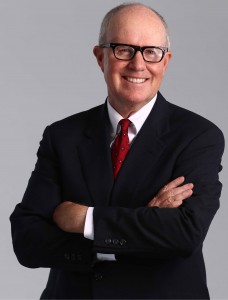Patent expert witness
Patent Expert Witness healthcare process healthcare IT software and security

I. Knowledge Training Education and Experience Specific to Patents
Please see CV regarding a comprehensive listing of education, training, published works, and experience.
A. U.S. Patent and Trademark Office Patent Trial and Appeal Board (PTAB)
- Prior Art Access, Roundtable, Alexandria (December 2013)
- Glossaries, Roundtable, U.C. Berkeley (October 2013)
- Software Partnership Listening Session, Roundtable, Silicon Valley(February 2013)
- Crowdsourcing, Roundtable, Alexandria (April 2014)
- Software Partnership Meeting, Roundtable, Alexandria (July 2014)
- Examiner Guidance for Internet Searching and Use of Crowdsourcing to Locate Prior Art, New York (December 2014)
B. Patent Trial and Appeal Board (PTAB)
- Non-appealable issues / Petitionable Matters in Ex parte Appeals (April 2018) presented by PTAB Judges Adriene Lepiane Hanlon, Bruce Wieder, and Anthony Knight
- Motions to Exclude and Motions to Strike in AIA Trials (June 2017)
- Motions to Seal, Protective Orders, and Confidential Information in AIA Trials (October 2017)
- Hearsay and Authentication (December 2017)
- Supplemental Information vs. Supplemental Evidence (February 2018)
II. Familiarity with patent statutes, rules, requirements, case law
A. Statutory: Patent code 35 U.S.C – Overview
- Part II – PATENTABILITY OF INVENTIONS AND GRANT OF PATENTS (§§ 100 to 212
- Part III – PATENTS AND PROTECTION OF PATENT RIGHTS (§§ 251 to 329)
B. Familiarity with Specific Sub Parts of Patent Code
Patent expert witness regarding utility
- Utility (see 35 U.S.C. § 101 which covers Utility, Statutory Subject Matter) especially in the three areas of:
- Process
- Composition of matter
- New and useful improvement
- Novelty (see S.C. §102)
- Prior art §102(a) – Prior art including information available for consideration when determining whether an invention is patentable, public information including patents, publications, article, product, information on the internet, etc. and printed publications both U.S. or foreign.
- Exceptions §102(b), disclosures
- Common ownership under joint research agreements §102(c)
- Patents and published applications as effective prior art §102(d)
- Non-obviousness (seeS.C. §112)
- General §112(a) including the written description, manner and process of making and using, terminology, skill level, and the best mode contemplated by the inventor or joint inventor…
- Conclusion §112(b) – conclusion distinctly claiming subject matter…
- Form §112(c) written in independent or multiple dependent form…
- Reference in dependent forms §112(d) a dependent form reference to the limitation of subject matter…
- Reference in multiple dependent forms112(e) concerning multiple dependent forms, a reference to more than one claim previously set forth…
- An element in a claim for combination §112(f) expressed as a means or step for performing a specified function without the recital of structure, material or acts…
C. Rules: Patent Regulations in 37 C.F.R.
- Chapter I – USPTO
- Chapter IV – National Institute of Standards and Technology ‘N.I.S.T.’ or ‘NIST’
Markman v. Westview Instruments, Inc. 517 U.S. 370, 372 (1996)) regarding the doctrine of equivalents, public notice of function of patent claims in equivalents cases and liable infringing parties [i] [ii]
Patent expert witness regarding damages.
Georgia-Pacific Corporation v. U.S. Plywood Corporation regarding damages
Overview: relevant for filings on or after March 16, 2013. Before AIA, priority was given to first to invent. After enactment of AIA, priority is given to first to file
- Filing reforms
- Examination reforms
- Third party reforms
- USPTO Fee setting
- Priority Examination fee
- Surcharges and supplemental examination
- Patents on tax strategies
- Virtual marketing and false marketing limits
- Establishment of satellite offices
- Creation of ombudsman
- Pro bono and studies programs
F. Petition able Matter (Petitions and Requests Decided by the Technology Center Directors MPEP 1002.02(C))
- Petitions or requests to reopen prosecution of patent applications or to reinstate a rejection after decision by the Patent Trial and Appeal Board under37 CFR 1.198, where no court action has been filed, MPEP §§ 1214.04 and 07.
- Petitions from a final decision of examiner requiring restriction in patent applications under37 CFR 1.144 and MPEP § 818.01(c), or protests following a holding of lack of unity of invention by the USPTO in its capacity as International Searching Authority (37 CFR 1.477and MPEP § 1850) or International Preliminary Examining Authority (37 CFR 1.489 and MPEP § 1875.02).
- Petitions invoking the supervisory authority of the Director of the USPTO under37 CFR 1.181 involving any ex parte action or requirement in a patent application by the examiner which is not subject to appeal (37 CFR 1.191 ) and not otherwise provided for, as for example:
- prematureness of final rejection,MPEP § 706.07(c);
- requirement to cancel “new matter” from specification,MPEP § 608.04(c);
- relative to formal sufficiency and propriety of affidavits under37 CFR 1.131(a) (MPEP § 715.08) or 37 CFR 1.132 (MPEP § 716);
- refusal to enter an amendment under37 CFR 1.312, MPEP § 714.16(d);
- refusal to enter an amendment,37 CFR 1.127, MPEP § 714.19;
- refusal to enter an amendment under37 CFR 1.111 or 115, MPEP §§ 714.01(e) and 714.03(a);
- resetting period for reply when the delivery of mailed correspondence was delayed by the United States Postal Service (USPS) or the USPTO,MPEP § 710.06; and
- requirement for information under37 CFR 1.105, MPEP § 704.14(c).
[i] David L. Schwartz, Explaining the Demise of the Doctrine of Equivalents, 26 Berkeley Tech. L.J. 1157 (2011). Available at: h p://scholarship.law.berkeley.edu/btlj/vol26/iss2/6
[ii] John R. Thomas, Claim Re-Construction: The Doctrine of Equivalents in the Post-Markman Era
Georgetown University Law Center
Related:
